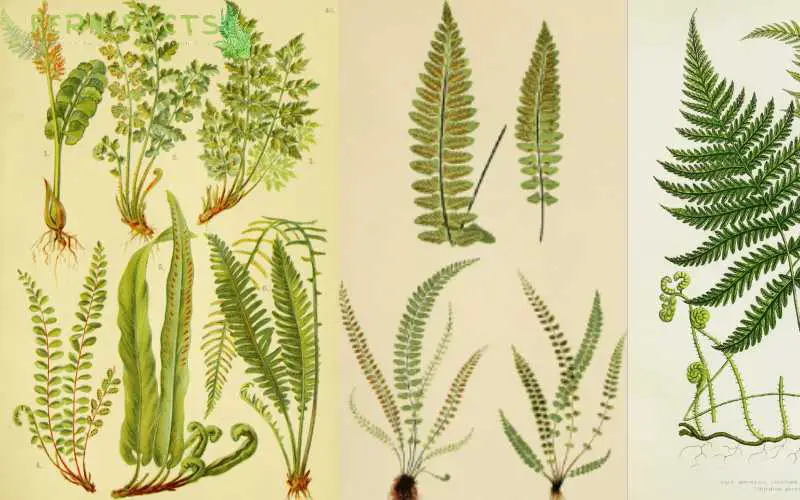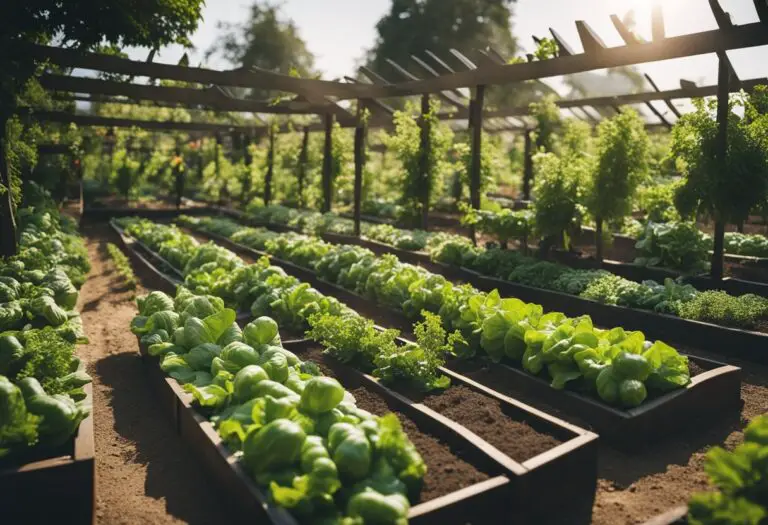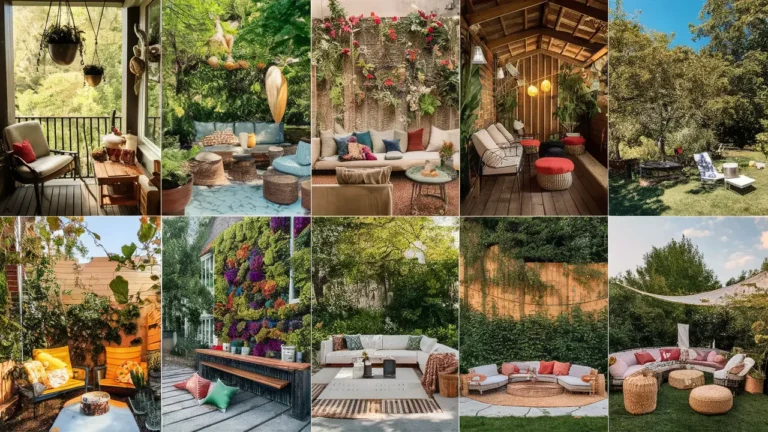Common Fern Varieties: Learn About Different Ferns to Grow
Are you a beginner-level fern lover? Don’t know which ferns you should plant or grow? Well, for a beginner-level gardener, it would be pretty difficult to understand every species’ characteristics.
However, we can generalize these ferns in some common varieties such as shade-loving ferns, sun-tolerable ferns, alkaline soil ferns, and wet soil ferns.
Based on these common varieties, you can have a basic idea about ferns. So in this article, I’ll be exploring a few common varieties of ferns and their characteristics. So let’s begin this topic more precisely.
Common Fern Varieties
If you want to look for some common varieties of ferns whose characteristics are almost similar, then here are those:
Shade Loving Ferns Varieties
Here are some top shade-loving ferns that mostly prefer dappled, filtered, and indirect places for thriving.
Boston ferns
- Botanical name: Nephrolepis exaltata
- Plants: Evergreen
- Native range: America
- Native habitats: moist shady locations like humid forests, swamps, and floodplains
- Shade requirements: partial shade or full shade
- Height: 20 to 98 inches
- Soil: acidic soil (6.0 to 6.5), moist well-drained, drought tolerant
Boston Fern is an evergreen plant that is highly shade-loving plants. These ferns are usually native to America. They are also renowned as sword fern, bluebell Fern, tuber ladder Fern, or fishbone Fern in different native countries.
As they are fond of moist shady places, therefore, they are one of the prior plants under the shade-loving category. However, they can tolerate drought if the soil is moist sufficient.
They enjoy a humid atmosphere, thus you need to mist these plants. Because they cannot tolerate below 80% humidity level.
Japanese Painted Fern
- Botanic name: Athyrium niponicum
- Common name: Japanese Painted fern
- Native range: Eastern Asia
- Plant type: deciduous perennial
- Size: around 1-3 ft tall, 1-2 ft wide
- light: partial to full shade
- Soil: neutral acidic, alkaline, moist well drained
- Foliage color: gray, purple, silver
Japanese painted ferns are shade-loving plants, known for their silver foliage fronds. This silvery foliage gives a subtle contrasting view with other flowering plants in the garden.
These ferns are mostly local to Eastern Asia. Because of their unique coloration phases these Japanese painted ferns would be the best option to have as a plant.
However, these ferns also prefer a cold humid atmosphere with moist soil. Similarly, they are highly intolerant of direct sunlight, which is why they need partial or fully shaded places to thrive.
Maidenhair Ferns
- Botanical name: Adiantum raddianum
- Plants: evergreen
- Native range: South America
- Native habitats: forest, flocks, river banks, coastal cliffs, trains, and streams
- Shade: partial shade
- Height: up to 0.5 m
- Soil: neutral, alkaline, moist, well-drained
These maidenhair ferns are shade-loving plants. Their small fronds will be the best indoor plants which will emphasize a delightful look in your house.
These ferns also prefer shaded places and indirect sunlight for growing actively. As they also prefer a humid atmosphere with dappled light conditions, therefore, indoors with shaded places will be their ideal condition to thrive
Soft Shield Fern
- Botanical name: Polystichum setiferum
- Common name: Alaska ferns, hedge ferns, Soft shield ferns
- Plants: Evergreen or Semi-evergreen plant
- Native range: Southern and western Europe
- Native habitats: Woodlands
- Shade requirements: full or partial
- Height: around 2 to 3 m
- Soil: sand, loam, acidic, neutral, moist and well-drained
- Hardiness: 4,5,6,7,8
Soft Shield ferns are evergreen Southern and Western native ferns that also prefer shaded places. These ferns have beautiful bright green textured, bipinnate fronds that are normally facing downwards.
Usually, their fern’s size increases from 30 to 120 cm long. These ferns usually grow in the native forest and mountain habitats.
As they also prefer shaded places, therefore a dappled atmosphere would be a perfect ideal place to thrive. Furthermore, these soft shield ferns are also ornamental plants that are frequently cultivated by gardeners.
Likewise other ferns, this soft shield fern also received a Garden merit award from the Royal Horticultural Society. And so, these ferns are deer and rabbit-resistant.
Sun-tolerable Fern Varieties
These fern varieties are well tolerable under full sun exposure if they get well moisture and hydration. Here are those sun-tolerable fern varieties:
Ostrich Fern
- Botanical name: Matteuccia struthiopteris
- Common name: Ostrich fern
- Plants: Deciduous perennial
- Native range: North America, Europe, Northern Asia
- Native habitats: rich woodlands, low areas, swamps
- Shade: partial or fully shaded
- Height: around 3 to 8 ft
- Width: up to 3-5 ft
- Hardy zone: 3, 4, 5, 6, 7
- Soil: acidic soil (5- 6) pH, moist, organic matter
Ostrich ferns are well-known ferns that can tolerate full sun exposure as long as their soil is moist. These ferns are deciduous plants that have crown shapes or colony-forming ferns.
Moreover, these plants also lose their fronds during the summer seasons where they lose their beauty.
Especially during winter and cold seasons, if you don’t protect them, their situation will be more vulnerable. Still, they can tolerate full sunlight if their soil is moist and damp enough.
Lady ferns
- Botanical names: Athyrium filix-femina
- Plants: Deciduous plants
- Shade: partial shade or full shade
- Height: around 1 m
- Soil: acidic or neutral. Moist, poor drainage tolerated
- Temperature: 50- 80 F
- USDA zone: 4,5,6,7,8,9
Lady fern species are popular deciduous plants that can grow well under full sun exposure. These feathery lady ferns are usually native to Asia, Europe, North Africa, the United States, and Canada along with survival tactics in Alaska under the right environment.
These ferns can grow best in damp moist or wet soil and shady woodland areas. Since They crave fully shaded places with the right moisture level, better if you provide them with their ideal condition.
However, they can still survive under full sunlight conditions because of their wet ground conditions. Wet soil or ground keeps the soil and roots hydrated so that they can tolerate even full sun exposure.
Cinnamon Fern
- Botanic name: Osmundastrum cinnamomeum
- Common name: Cinnamon Fern
- Natural range: America, Asia
- Natural habitat: bogs, moist woodlands, swamps
- Plant: Perennial
- Soil: acidic soil, clay, sand, well-drained, moist
- Light: full to partial shade
- Height: around 1 to 3 ft
- USDA Zone: 3-9
Cinnamon ferns are known for their bright green color, foliage texture, and softness. Cinnamon ferns are mostly native to America and eastern Asia with their natural habitats being woodlands, bogs, and swamps.
This fern can grow up to 2 ft to 4 ft long with their arched green foliage. As they are deciduous plants or perennial plants, they grow and shine all the summertime, and turn yellow before dying in the winter seasons.
These ferns are also sun-tolerant ferns. Thus, you can grow them under full sun exposure but make sure you keep the soil hydrated.
Wet Soil Fern Varieties
Similarly, like sun-tolerable ferns, These mentioned fern varieties are well adaptable in wet soil conditions.
Royal ferns
- Botanical name: Osmunda regalis
- Plants: Deciduous
- Native range: Europe, Asia and Africa
- Native habitats: Woodlands
- Shade requirements: full, partial, full sun
- Height: around 2.5 meters
- Soil: acid, neutral, alkaline, moist poor drainage tolerance
Royal Ferns are well-recognized ferns for planting in the wet soil. These ferns are mostly native to Europe, Asia, and Africa by prefer wetlands or woodland habitats near any streams or rivers.
Therefore, they require acidic neutral wet soil conditions to grow and thrive. During early growth, it has purple fronds which change from purple to green and green to golden brown throughout the years.
The unique coloration of their growing phase makes these plants pretty and beautiful among nature enthusiast people.
Interrupted fern
- Botanical name: Osmunda claytoniana
- Plants: Deciduous
- Native range: Eastern Asia, eastern United States, Canada.
- Shade requirements: partial shade
- Height: up to 1 m
- Soil: acidic, moist, well-drained
Interrupted ferns, a deciduous plants that are well-adaptable for wet conditions. These ferns are widely spread in western Asia, the United States, and Canada.
Nevertheless, these ferns can be the least considered ferns for alkaline soil as they can grow better in acidic and neutral soil with a moist wet environment.
Besides, a dappled atmosphere with indirect sunlight would be the best fit for them to thrive in nature.
Oriental chain fern
- Botanical name: Woodwardia orientalis
- Plants: evergreen
- Native range: Asia, Japan, China Philippines, Taiwan
- Shade requirements: partial shade under indirect sunlight light
- Height: up to 1.5 meter
- Soil: acid or neutral, moist, and poor drainage tolerance
Oriental chain ferns are also considered one of the best fit for wet ground conditions. These ferns are widely distributed in Asian countries like Japan, China, the Philippines, Taiwan, etc.
Like other ferns, they also prefer well-drained Soil with wet conditions or environment. They need acidic soil that can enrich their growth.
Similarly, these are also very adaptable ferns for your gardens or yard because these plants have an arching growth habit in wet soil.
Alkaline Soil Fern Varieties
These refer to fern varieties that can adjust well in alkaline soil. Here are those:
Hart’s Tongue Fern
- Botanical name: Asplenium scolopendrium
- Plants: Evergreen
- Native range: Northern hemisphere
- Native habitats: moist soil, damp crevices
- Shade requirements: partial to full shade
- Height: around 0.5 m
- Soil: alkaline or neutral, moist and well drained
Hart’s tongue ferns are evergreen ferns that are widely distributed in the northern hemisphere. These ferns have the most unusual simple, strap-shaped undivided fronds.
These ferns are one of the best ferns to grow on neutral alkaline soil, clay soil, or lime soil. As they require moist and damp soil with shaded areas which can make them thrive in nature.
However, these American Native plants have a reputation for difficult cultivation due to ideal environment requirements. These ferns have also been used as medicine plants to cure many diseases.
Christmas Fern
- Botanical name: Polystichum acrostichoides
- Plants: Evergreen
- Native range: North America
- Shade requirements: Full or partial shade
- Height: up to 1 m
- Soil: neutral or alkaline and moist, well-drained
Christmas ferns are evergreen plants that are mostly native to North America including Nova Scotia, Florida, and Texas. These ferns leather ferns emphasize glossy, green fronds throughout the year. They are also well tolerable in alkaline soil and grow actively there.
Generally, they are fond of shady habitats like woodlands, rocky slopes, and stream banks. Moreover, It’s a very adaptable fern for cultivation in the yard or in the natural park or gardens.
As these are evergreen plants, they are also fond of moist damp environments with filtered sunlight.
Bird’s nest ferns
- Botanical name: Asplenium nidus
- Plants: evergreen
- Native range: southeastern Asia, eastern Australia, Hawaii, India and eastern Africa
- Shade requirements: partial to full shade
- Height: around 1 m
- Soil: alkaline or neutral, moist and well drained
Bird’s nest fern is another variation that you can plant in your clay soil. These plants are very common in southeastern Asia, eastern Australia, Hawaii, India, and eastern Africa.
These species’ fern fronds are almost similar to banana leaves. They are the evergreen plants which means they will have fronds throughout all the seasons of the year and this will also not go under the dormancy stage.
These nest fern plants also require partial or fully shaded places with warm and humid places to flourish.
Conclusion
In short, ferns are a very easy-growing plant to grow and maintain. However, without understanding their characteristics it will be hard for you to thrive.
Although, it’s very difficult if you’re a beginner-level gardener. Because there are lots of varieties and categories out there that define each and every fern’s characteristics.
Based on different varieties such as shade-loving ferns, sun-tolerable ferns, wet ground ferns, and alkaline soil ferns, they can be categorized easily.
Thus, you can easily identify and generalize their characteristics and give them a thriving atmosphere.







